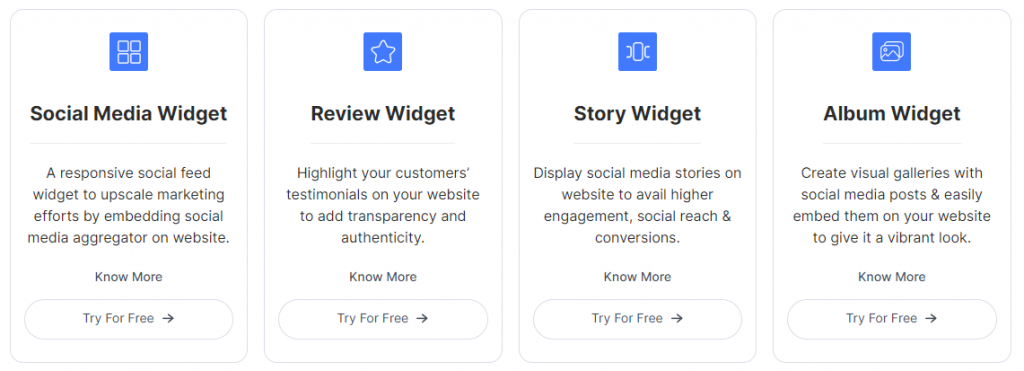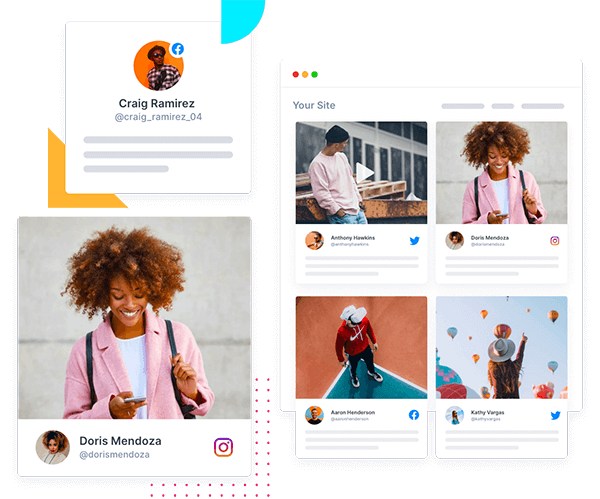Combine Social Media Marketing & Content Marketing For Brand Awareness
Having a robust social presence has become a form of digital marketing currency.
Social media marketing has become a powerful awareness tool for brands and users, from positioning your business as a trustworthy brand to giving you critical insights about your ideal customer.
But what about when social media marketing meets content marketing?
Chock-full of opportunities, combining these two marketing channels can help you build a compelling brand presence and scale your demand generation efforts.
Stick around if you’re ready to learn how to effectively combine social media marketing and content marketing to increase brand awareness.
Today, we’ve compiled a helpful guide to help you take the stress out of these two prominent marketing strategies.
Ready to learn more?
Let’s begin!
1. Understand Your Audience
Social media and content marketing are effective strategies to help you get more eyes on your business, but they’re even more powerful when combined.
To effectively use these two approaches, creating compelling content that aligns with your brand and resonates with your audience is essential.
Focus on providing value to your followers and customers rather than just promoting your products. Use social media to amplify your content and drive traffic to your website and blog — and vice versa. Doing so can increase brand awareness and build a loyal following for your business.
For instance, brands like Hers, StudioSuits, and Clean Origin are great examples of businesses effectively doing this. These companies create high-quality, value-driven content on their blogs and social media channels tailored to their audience’s unique pain points.
For example, StudioSuits’ target audience consists of men who value quality suits but struggle to find brands offering high-quality, tailored options. They’re also men who appreciate dressing well, love fashion and enjoy learning about it.
With this in mind, StudioSuits regularly posts images displaying its clients’ custom-tailored men’s suits on Instagram to show what it means to go from an idea to “done.” It also creates blog posts with style tips and men’s fashion advice.


Hers’ target audience includes women who struggle with anxiety, depression, and hair loss. With this in mind, it uses social media to promote its spironolactone for hair loss treatment, and it also creates informative articles about hair loss and mental health topics on its blog.

And Clean Origin’s target customers value purchasing diamonds ethically and responsibly. Clean Origin promotes its high-quality diamond stud earrings on Instagram to serve its audience. Its blog creates content about the ethical and environmental benefits of lab-grown diamonds.

So, what about your audience?
What are they struggling with? How can you use your social media and blog content to help them solve a problem they have?
Dig deep into your target customer’s pain points and the solutions you can offer them.
2. Choose Your Core Content Themes Based on Your Audience
Now that you have a firm grasp of your audience’s top pain points choose the content themes you will center your campaigns around.
For a more refined approach, conduct SERP research to see what FAQs your audience has when searching the web. You can also conduct SEO research on tiktok, Instagram, Facebook, Twitter almost on all social media platforms to see what they search for on any platform.
Then, build your content strategy.
Choose your core pillar pieces and related topics.
To help you stand apart from your competitors on each marketing channel, create a value proposition and weave it into your assets when producing content. You can also opt for some of the effective lead generation tools for better and faster results.
3. Produce Your Blog Articles & Social Media Content
Now that you’ve created your content plan, it’s time to produce your blog articles and social media content.
To keep things simple and organized, work in themes. For instance, if you’re a career coach, you might post motivational content on Mondays, job tips on Tuesdays, interview strategies on Wednesdays, and market insights on Thursdays.
Here’s a checklist you can follow to help you create aligned content consistently:
- Choose your social media marketing strategy and blogging strategy: This includes the days you’ll post and the caption/image themes for each day. Don’t forget to include CTAs, hashtags, and metadata, too.
- Social media channels: Which channels are you going to focus on?
- Social media and blog goals: What’s your plan for each post? Connect with more social media users? Build trust? Increase domain authority? Nudge top-of-the-funnel prospects to the middle-of-the-funnel? Set and track your objectives for each asset.
- Business goals: Beyond raising brand awareness, what else do you want social media and blogging to help you do? Increase leads? Help you understand your target customers better? Give you an outlet to run ads so you can boost sales. Increase demos? Use this to inform your ideal customer profile, lead magnets, ads, and campaign series.
4. Repurpose Your Blog Articles as Social Media Content & Vice-Versa
Once you’ve produced content for both marketing channels, it’s time to repurpose assets.
Here’s how:
a. Turn an Informative Guide on Your Blog Into an Explainer Video on Social Media
Have you broken down how to get a digital nomad visa to Italy on your blog? Did you put together a list of the best chatbot software for 2023? Turn these informative guides into explainer videos on YouTube, Instagram Reels, TikTok Videos, and Facebook.
A prime example of this is Penn Tool Co.
Known as one of the best tools companies in the US, Penn publishes informative guides for each power tool it offers on its blog:

It then repurposes these guides into short instructional videos across its social media channels:

Penn also partners with social media influencers in the industry to further expand its reach among the metalworking community.
Another brand that uses this strategy well is Freepik, a site that offers business cards and vector images for custom graphic design.
For instance, Freepik will draw up blog posts, like the following one on “mysterious logos and their hold on our imagination”:

And then later produce a YouTube video on it:

This strategy is an easy way to breathe life into your words and captivate your audience.
b. Feature Published Social Media Content as a Blog Post
And speaking of quickly, how about featuring one of your favored social media posts front and center in a blog post?
Here’s an example from Form Health, a brand that prescribes weight loss medication online, to demonstrate what we mean:

As you can see in the image above, Form Health starts with a short intro explaining the social media post it will feature.
Then it displays the social media post, which is an embedded YouTube video. It then wraps up the post with some blog links to the recipes featured in the video. Genius!
Pro-Tip: As we marketers know, video content captures people’s attention and conveys information quickly. However, producing videos takes time and effort.
To help streamline the process, consider using a video presentation maker to create high-quality video content that aligns with your content strategy. It could include product demos, explainer videos, and behind-the-scenes footage.
c. Showcase Blogs Where Your Brand Has Been Featured-On in Your Social Media Platforms
Displaying and leveraging organic mentions on reputable websites in your sector on your social media channels is a fantastic way to integrate content marketing with social media.
For instance, Campus.edu used TikTok to share with its audience that Forbes had written a story about how it raised $29 million so students could pay tuition below the max Pell Grant (rather than taking out loans). This innovative approach by Campus.edu highlights the importance of exploring alternative financing options such as Student Loan Refinance, which can help students manage their educational expenses more effectively and potentially reduce the burden of student loans.

Following this strategy can help you build your reputation and position your brand as an authority in your industry over time.
d. Additional Strategies
Here are some additional ways you can repurpose content across your blog and social media profiles:
- Pull 3-5 tips from a blog listicle and turn them into a carousel post on social
- Use a social listening tool to craft a user-generated content campaign on social and feature it on your blog after
- Pull a case study from your article and break it down in a post on social
- Turn the tips from your blog article into an infographic and share it as a post on social
- Grab FAQs from the comments section on your favored social media posts and build blog content around them
Would it be possible to insert this “Incorporate a QR code generator into your content to engage users and provide quick access to additional resources or information.”
5. Use Social Media Aggregator to Display Social Media Content on Website & Blog
And finally, a super easy way to combine social media marketing and content marketing is to add a social media widget to your website and blog, like this one:

Hint: It’s yours truly.
At Tagembed, we offer a free social media aggregator to help you collect, curate, and moderate social media content on your website.
Choose from the following widgets to bring your social media to life on your blog:

Wrap Up
And there you go!
Today we covered how to effectively combine social media and content marketing with helping you boost brand awareness.
Ready to put these tips into action? Save this article for reference!
And don’t forget to look into Tagembed, our social media aggregator tool! Sign up for a free trial, today.
To your success!
Embed social feed from Facebook, YouTube, Instagram, Twitter on your website, like a PRO
Invalid Email Address